Articles and Company News
We aim to keep our clients up-to-date with news and relevant opinions which concern your finances. Our regular email bulletin is designed to inform and share views with our members.
2021
RBA Media Release, June 2021
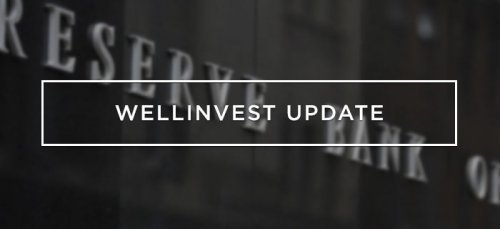
Statement by Philip Lowe, Governor: Monetary Policy Decision
At its meeting today, the Board decided to maintain the current policy settings, including: the targets of 10 basis points for the cash rate and the yield on the 3-year Australian Government bond; the parameters of the government bond purchase program; and the rate of zero per cent on Exchange Settlement balances.
The global economy is continuing to recover from the pandemic and the outlook is for strong growth this year and next. The recovery remains uneven, though, and some countries are yet to contain the virus. Global trade in goods has picked up strongly and commodity prices are mostly higher than at the start of the year. However, inflation in underlying terms remains low and below central bank targets.
Sovereign bond yields have been steady recently after increasing earlier in the year due to the positive news on vaccines and the additional fiscal stimulus in the United States. Medium-term inflation expectations have lifted from near record lows to be closer to central banks' targets. The 3-year government bond yield in Australia is consistent with the Board's target and lending rates for most borrowers are at record lows. The Australian dollar remains in the upper end of the range of recent years.
The economic recovery in Australia is stronger than earlier expected and is forecast to continue. The Bank's central scenario is for GDP to grow by 4¾ per cent over this year and 3½ per cent over 2022. This outlook is supported by fiscal measures and very accommodative financial conditions. An important ongoing source of uncertainty is the possibility of significant outbreaks of the virus, although this should diminish as more of the population is vaccinated.
Progress in reducing unemployment has been faster than expected, with the unemployment rate declining to 5.5 per cent in April. Job vacancies are at a high level and a further decline in the unemployment rate to around 5 per cent is expected by the end of this year. There are reports of labour shortages in some parts of the economy.
Despite the strong recovery in the economy and jobs, inflation and wage pressures are subdued. While a pick-up in inflation and wages growth is expected, it is likely to be only gradual and modest. In the central scenario, inflation in underlying terms is expected to be 1½ per cent in 2021 and 2 per cent in mid 2023. In the short term, CPI inflation is expected to rise temporarily to be above 3 per cent in the June quarter because of the reversal of some COVID-19-related price reductions.
Housing markets have strengthened further, with prices rising in all major markets. Housing credit growth has picked up, with strong demand from owner-occupiers, especially first-home buyers. There has also been increased borrowing by investors. Given the environment of rising housing prices and low interest rates, the Bank will be monitoring trends in housing borrowing carefully and it is important that lending standards are maintained.
As foreshadowed last month, at its July meeting the Board will consider whether to retain the April 2024 bond as the target bond for the 3-year yield target or to shift to the next maturity, the November 2024 bond. The Board is not considering a change to the target of 10 basis points. At the July meeting the Board will also consider future bond purchases following the completion of the second $100 billion of purchases under the government bond purchase program in September. The Board continues to place a high priority on a return to full employment.
The date for final drawings under the Term Funding Facility is 30 June 2021. So far, authorised deposit-taking institutions have drawn $134 billion under this facility and a further $75 billion is available. The facility is providing low-cost fixed-rate funding for 3 years and so will continue to support low borrowing costs until mid 2024.
The Board is committed to maintaining highly supportive monetary conditions to support a return to full employment in Australia and inflation consistent with the target. It will not increase the cash rate until actual inflation is sustainably within the 2 to 3 per cent target range. For this to occur, the labour market will need to be tight enough to generate wages growth that is materially higher than it is currently. This is unlikely to be until 2024 at the earliest.
2021
RBA Media Release, May 2021
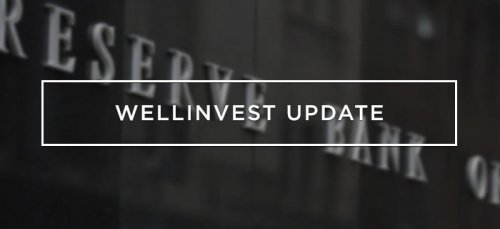
Statement by Philip Lowe, Governor: Monetary Policy Decision
At its meeting today, the Board decided to maintain the current policy settings, including the targets of 10 basis points for the cash rate and the yield on the 3-year Australian Government bond, as well as the parameters of the Term Funding Facility and the government bond purchase program.
The global economy is continuing to recover from the pandemic and the outlook is for strong growth this year and next. The recovery remains uneven, though, and some countries are yet to contain the virus. Global trade in goods has picked up strongly and commodity prices are mostly higher than at the start of the year. However, inflation remains low and below central bank targets.
Sovereign bond yields have been steady recently after increasing earlier in the year due to the positive news on vaccines and the additional fiscal stimulus in the United States. Inflation expectations have lifted from near record lows to be closer to central banks' targets. The 3-year government bond yield in Australia is at the Board's target of 10 basis points and lending rates for most borrowers are at record lows. The Australian dollar remains in the upper end of the range of recent years.
The economic recovery in Australia has been stronger than expected and is forecast to continue. This recovery is especially evident in the strong growth in employment, with the unemployment rate falling further to 5.6 per cent in March and the number of people with a job now exceeding the pre-pandemic level.
The Bank's central scenario for GDP growth has been revised up further, with growth of 4¾ per cent expected over 2021 and 3½ per cent over 2022. A pick-up in business investment is expected and household spending will be supported by the strengthening in balance sheets over the past year. The unemployment rate is expected to continue to decline, to be around 5 per cent at the end of this year and around 4½ per cent at the end of 2022.
Despite the strong recovery in economic activity, the recent CPI data confirmed that inflation pressures remain subdued in most parts of the Australian economy. A pick-up in inflation and wages growth is expected, but it is likely to be only gradual and modest. In the central scenario, inflation in underlying terms is expected to be 1½ per cent in 2021 and 2 per cent in mid 2023. In the short term, CPI inflation is expected to rise temporarily to be above 3 per cent in the June quarter because of the reversal of some COVID-19-related price reductions.
Housing markets have strengthened further, with prices rising in all major markets. Housing credit growth has picked up, with strong demand from owner-occupiers, especially first-home buyers. Given the environment of rising housing prices and low interest rates, the Bank will be monitoring trends in housing borrowing carefully and it is important that lending standards are maintained.
At its July meeting, the Board will consider whether to retain the April 2024 bond as the target bond for the 3-year yield target or to shift to the next maturity, the November 2024 bond. The Board is not considering a change to the target of 10 basis points. At the July meeting, the Board will also consider future bond purchases following the completion of the second $100 billion of purchases under the government bond purchase program in September. The Board is prepared to undertake further bond purchases to assist with progress towards the goals of full employment and inflation. The Board places a high priority on a return to full employment.
The date for final drawings under the Term Funding Facility is 30 June 2021. Given that financial markets in Australia are operating well, the Board is not considering a further extension of this facility. Authorised deposit-taking institutions have drawn $100 billion so far and a further $100 billion is currently available. Given the facility provides funding for 3 years, it will continue to support low funding costs in Australia until mid 2024.
The Board is committed to maintaining highly supportive monetary conditions to support a return to full employment in Australia and inflation consistent with the target. It will not increase the cash rate until actual inflation is sustainably within the 2 to 3 per cent target range. For this to occur, the labour market will need to be tight enough to generate wages growth that is materially higher than it is currently. This is unlikely to be until 2024 at the earliest.
2021
RBA Media Release, April 2021
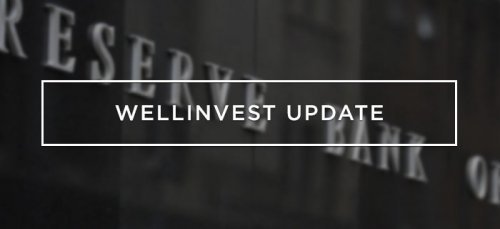
Statement by Philip Lowe, Governor: Monetary Policy Decision
At its meeting today, the Board decided to maintain the current policy settings, including the targets of 10 basis points for the cash rate and the yield on the 3-year Australian Government bond, as well as the parameters of the Term Funding Facility and the government bond purchase program.
The rollout of vaccines is supporting the recovery of the global economy, although the recovery is uneven. While there are still considerable uncertainties regarding the outlook, the central case has improved. Global trade has picked up and commodity prices are mostly higher than at the start of the year. Inflation remains low and below central bank targets.
Sovereign bond yields have increased over recent months due to the positive news on vaccines and the additional fiscal stimulus in the United States. Inflation expectations have also lifted from near record lows to be now closer to central banks' targets. The 3-year government bond yield in Australia is at the Board's target of 10 basis points and lending rates for most borrowers are at record lows. The Australian dollar remains in the upper end of the range of recent years.
The economic recovery in Australia is well under way and is stronger than had been expected. The unemployment rate fell to 5.8 per cent in February and the number of people with a job has returned to the pre-pandemic level. GDP increased by a strong 3.1 per cent in the December quarter, boosted by a further lift in household consumption as the health situation improved. The recovery is expected to continue, with above-trend growth this year and next. Household and business balance sheets are in good shape and should continue to support spending.
Nevertheless, wage and price pressures are subdued and are expected to remain so for some years. The economy is operating with considerable spare capacity and unemployment is still too high. It will take some time to reduce this spare capacity and for the labour market to be tight enough to generate wage increases that are consistent with achieving the inflation target. In the short term, CPI inflation is expected to rise temporarily because of the reversal of some COVID-19-related price reductions. Looking through this, underlying inflation is expected to remain below 2 per cent over the next few years.
Housing markets have strengthened further, with prices rising in most markets. Housing credit growth to owner-occupiers has picked up, with strong demand from first-home buyers. In contrast, investor credit growth remains subdued. Given the environment of rising housing prices and low interest rates, the Bank will be monitoring trends in housing borrowing carefully and it is important that lending standards are maintained.
The Board remains committed to the 3-year government bond yield target of 10 basis points. Later in the year it will consider whether to retain the April 2024 bond as the target bond or to shift to the next maturity. The initial $100 billion government bond purchase program is almost complete and the second $100 billion program will commence next week. Beyond this, the Bank is prepared to undertake further bond purchases if doing so would assist with progress towards the goals of full employment and inflation. Authorised deposit-taking institutions have drawn $95 billion under the Term Funding Facility and have access to a further $95 billion. Since the start of 2020, the RBA's balance sheet has increased by around $215 billion.
These various monetary measures are continuing to help the economy by keeping financing costs very low, contributing to a lower exchange rate than otherwise, and supporting the supply of credit and household and business balance sheets. Together, monetary and fiscal policy are contributing to the recovery in aggregate demand and the pick-up in employment.
The Board is committed to maintaining highly supportive monetary conditions until its goals are achieved. The Board will not increase the cash rate until actual inflation is sustainably within the 2 to 3 per cent target range. For this to occur, wages growth will have to be materially higher than it is currently. This will require significant gains in employment and a return to a tight labour market. The Board does not expect these conditions to be met until 2024 at the earliest.
2021
RBA Media Release, March 2021
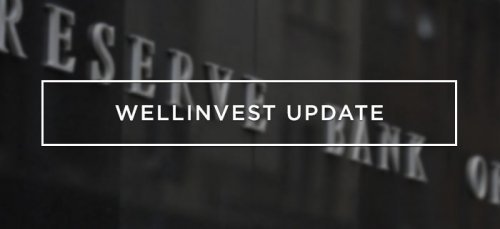
Statement by Philip Lowe, Governor: Monetary Policy Decision
At its meeting today, the Board decided to maintain the current policy settings, including the targets of 10 basis points for the cash rate and the yield on the 3-year Australian Government bond, as well as the parameters of the Term Funding Facility and the government bond purchase program.
The outlook for the global economy has improved over recent months due to the ongoing rollout of vaccines. While the path ahead is likely to remain bumpy and uneven, there are better prospects for a sustained recovery than there were a few months ago. Global trade has picked up and commodity prices have increased over recent months. Even so, the recovery remains dependent on the health situation and on significant fiscal and monetary support. Inflation remains low and below central bank targets.
The positive news on vaccines together with the prospect of further significant fiscal stimulus in the United States has seen longer-term bond yields increase considerably over the past month. This increase partly reflects a lift in expected inflation over the medium term to rates that are closer to central banks' targets. Reflecting these global developments, there have been similar movements in Australian bond markets. Changes in bond yields globally have been associated with volatility in some other asset prices, including foreign exchange rates. The Australian dollar remains in the upper end of the range of recent years.
In Australia, the economic recovery is well under way and has been stronger than was earlier expected. There has been strong growth in employment and a welcome decline in the unemployment rate to 6.4 per cent. Retail spending has been strong and most of the households and businesses that had deferred loan repayments have now recommenced repayments. The recovery is expected to continue, with the central scenario being for GDP to grow by 3½ per cent over both 2021 and 2022. GDP is expected to return to its end-2019 level by the middle of this year.
Wage and price pressures are subdued and are expected to remain so for some years. The economy is still operating with considerable spare capacity and the unemployment rate remains higher than it has been for some years. Further progress in reducing spare capacity is expected, but it will be some time before the labour market is tight enough to generate wage increases that are consistent with achieving the inflation target. In the central scenario, the unemployment rate will still be around 6 per cent at the end of this year and 5½ per cent at the end of 2022. In underlying terms, inflation is expected to be 1¼ per cent over 2021 and 1½ per cent over 2022. CPI inflation is expected to rise temporarily because of the reversal of some COVID-19-related price reductions.
The current monetary policy settings are continuing to help the economy by keeping financing costs very low, contributing to a lower exchange rate than otherwise, and supporting the supply of credit and household and business balance sheets. Together, monetary and fiscal policy are supporting the recovery in aggregate demand and the pick-up in employment.
Lending rates for most borrowers are at record lows and housing prices across Australia have increased recently. Housing credit growth to owner-occupiers has picked up, but investor and business credit growth remain weak. Lending standards remain sound and it is important that they remain so in an environment of rising housing prices and low interest rates.
The Bank remains committed to the 3-year yield target and recently purchased bonds to support the target and will continue to do so as necessary. Also, bond purchases under the bond purchase program were brought forward this week to assist with the smooth functioning of the market. The Bank is prepared to make further adjustments to its purchases in response to market conditions. To date, a cumulative $74 billion of government bonds issued by the Australian Government and the states and territories have been purchased under the initial $100 billion program. A further $100 billion will be purchased following the completion of the initial program and the Bank is prepared to do more if that is necessary. Authorised deposit-taking institutions have drawn $91 billion under the Term Funding Facility and have access to a further $94 billion. Since the start of 2020, the RBA's balance sheet has increased by around $175 billion.
The Board remains committed to maintaining highly supportive monetary conditions until its goals are achieved. The Board will not increase the cash rate until actual inflation is sustainably within the 2 to 3 per cent target range. For this to occur, wages growth will have to be materially higher than it is currently. This will require significant gains in employment and a return to a tight labour market. The Board does not expect these conditions to be met until 2024 at the earliest.
2021
RBA Media Release, February 2021
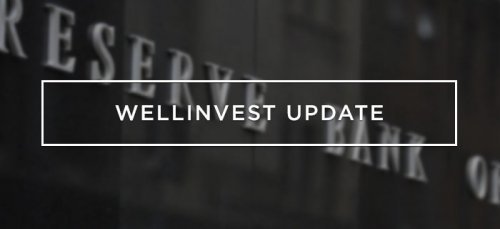
Statement by Philip Lowe, Governor: Monetary Policy Decision
At its meeting today, the Board decided to maintain the targets of 10 basis points for the cash rate and the yield on the 3-year Australian Government bond, as well as the parameters of the Term Funding Facility. It also decided to purchase an additional $100 billion of bonds issued by the Australian Government and states and territories when the current bond purchase program is completed in mid April. These additional purchases will be at the current rate of $5 billion a week.
The outlook for the global economy has improved over recent months due to the development of vaccines. While the path ahead is likely to remain bumpy and uneven, there are better prospects for a sustained recovery than there were a few months ago. That recovery, however, remains dependent on the health situation and on significant fiscal and monetary support. Inflation remains low and below central bank targets.
In Australia, the economic recovery is well under way and has been stronger than was earlier expected. There has been strong growth in employment and a welcome decline in the unemployment rate to 6.6 per cent. Retail spending has been strong and many of the households and businesses that had deferred loan repayments have now recommenced repayments. These outcomes have been underpinned by Australia's success on the health front and the very significant fiscal and monetary support.
The recovery is expected to continue, with the central scenario being for GDP to grow by 3½ per cent over both 2021 and 2022. GDP is now expected to return to its end-2019 level by the middle of this year. Even so, the economy is expected to operate with considerable spare capacity for some time to come. The unemployment rate remains higher than it has been for the past 2 decades and while it is expected to decline, the central scenario is for unemployment to be around 6 per cent at the end of this year and 5½ per cent at the end of 2022.
Wage and price pressures remain subdued. The CPI increased by just 0.9 per cent over the year to the December quarter and wages (as measured by the Wage Price Index) are increasing at the slowest rate on record. Both inflation and wages growth are expected to pick up, but to do so only gradually, with both remaining below 2 per cent over the next couple of years. In underlying terms, inflation is expected to be 1¼ per cent over 2021 and 1½ per cent over 2022.
In addition to the central scenario, the Board considered upside and downside scenarios related to the virus and the rollout of vaccines. Disappointing news on the health front would delay the recovery and the expected progress on reducing unemployment. On the other hand, it is possible that further positive health outcomes would boost consumer spending and investment, leading to stronger growth than is currently expected. An important near-term issue is how households and businesses adjust to the tapering of some of the COVID support measures and to what extent they will use their stronger balance sheets to support spending.
Financial conditions remain highly accommodative, with lending rates for most borrowers at record lows and asset prices, including housing prices, mostly increasing. Housing credit growth to owner-occupiers has picked up recently, but investor and business credit growth remain weak. The exchange rate has appreciated and is in the upper end of the range of recent years.
The Board remains committed to maintaining highly supportive monetary conditions until its goals are achieved. Given the current outlook for inflation and jobs, this is still some way off. The current monetary policy settings are continuing to help the economy by lowering financing costs for borrowers, contributing to a lower exchange rate than otherwise, supporting the supply of credit needed for the recovery and supporting household and business balance sheets. The decision to extend the bond purchase program will ensure a continuation of this monetary support.
To date, authorised deposit-taking institutions have drawn $86 billion under the Term Funding Facility and have access to a further $99 billion. The Bank has bought a cumulative $52 billion of government bonds issued by the Australian Government and the states and territories under the bond purchase program. It has not purchased bonds in support of the 3-year yield target since early December. Since the start of 2020, the RBA's balance sheet has increased by around $160 billion.
The Board will not increase the cash rate until actual inflation is sustainably within the 2 to 3 per cent target range. For this to occur, wages growth will have to be materially higher than it is currently. This will require significant gains in employment and a return to a tight labour market. The Board does not expect these conditions to be met until 2024 at the earliest.
2020
RBA Media Release, December 2020
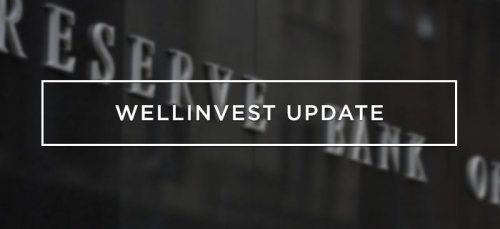
Statement by Philip Lowe, Governor: Monetary Policy Decision
At its meeting today, the Board decided to maintain the current policy settings, including the targets of 10 basis points for the cash rate and the yield on 3-year Australian Government bonds, as well as the parameters of the Term Funding Facility and the government bond purchase program.
Globally, the news has been mixed recently. On the one hand, infection rates have risen sharply in Europe and the United States and the recoveries in these economies have lost momentum. On the other hand, there has been positive news on the vaccine front, which should support the recovery of the global economy. The recovery is also dependent on ongoing support from both fiscal and monetary policy. Hours worked in most countries remain noticeably below pre-pandemic levels and inflation is low and below central bank targets.
Financial conditions remain accommodative around the world, with bond yields near historically low levels. The positive news on vaccines has boosted equity markets, lowered risk premiums and supported further increases in some commodity prices. The improvement in risk sentiment has also been associated with a depreciation of the US dollar and an appreciation of the Australian dollar.
In Australia, the economic recovery is under way and recent data have generally been better than expected. This is good news, but the recovery is still expected to be uneven and drawn out and it remains dependent on significant policy support. In the RBA's central scenario, it will not be until the end of 2021 that the level of GDP reaches the level attained at the end of 2019. In the central scenario, GDP is expected to grow by around 5 per cent next year and 4 per cent over 2022.
Employment growth was again strong in October, although the unemployment rate increased to 7 per cent as more people rejoined the workforce. A further rise in the unemployment rate is still expected, as businesses restructure in response to the pandemic and more people rejoin the workforce. The unemployment rate is forecast to decline next year, but only slowly and still to be around 6 per cent at the end of 2022.
The extended period of high unemployment and excess capacity is expected to result in subdued increases in wages and prices over coming years. In the September quarter, the Wage Price Index increased by just 0.1 per cent, to be 1.4 per cent higher over the year. In underlying terms, inflation is forecast to be 1 per cent in 2021 and 1½ per cent in 2022.
The Board views addressing the high rate of unemployment as an important national priority. Its policy decisions over recent months will help here. These decisions are complementary to the significant steps taken by Australian governments to support jobs and economic growth.
The Bank's policy response has lowered interest rates across the yield curve, which will assist the recovery by: lowering financing costs for borrowers; contributing to a lower exchange rate than otherwise; and supporting asset prices and balance sheets. The Term Funding Facility is also supporting the supply of credit to businesses. To date, authorised deposit-taking institutions have drawn down $84 billion under this facility and have access to a further $105 billion. Over the past month, the Bank has bought $19 billion of government bonds under the bond purchase program and a further $5 billion of Australian government securities in support of the 3-year yield target. Since the start of this year, the RBA's balance sheet has increased by around $130 billion.
Given the outlook for both employment and inflation, monetary and fiscal support will be required for some time. For its part, the Board will not increase the cash rate until actual inflation is sustainably within the 2 to 3 per cent target range. For this to occur, wages growth will have to be materially higher than it is currently. This will require significant gains in employment and a return to a tight labour market. Given the outlook, the Board is not expecting to increase the cash rate for at least 3 years. The Board will keep the size of the bond purchase program under review, particularly in light of the evolving outlook for jobs and inflation. The Board is prepared to do more if necessary.
2020
RBA Media Release, November 2020
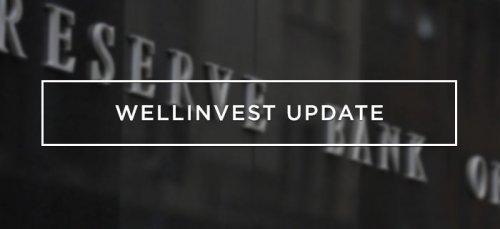
Statement by Philip Lowe, Governor: Monetary Policy Decision
At its meeting today, the Board decided on a package of further measures to support job creation and the recovery of the Australian economy from the pandemic. With Australia facing a period of high unemployment, the Reserve Bank is committed to doing what it can to support the creation of jobs. Encouragingly, the recent economic data have been a bit better than expected and the near-term outlook is better than it was three months ago. Even so, the recovery is still expected to be bumpy and drawn out and the outlook remains dependent on successful containment of the virus.
The elements of today's package are as follows:
- a reduction in the cash rate target to 0.1 per cent
- a reduction in the target for the yield on the 3-year Australian Government bond to around 0.1 per cent
- a reduction in the interest rate on new drawings under the Term Funding Facility to 0.1 per cent
- a reduction in the interest rate on Exchange Settlement balances to zero
- the purchase of $100 billion of government bonds of maturities of around 5 to 10 years over the next six months.
Under the program to purchase longer-dated bonds, the Bank will buy bonds issued by the Australian Government and by the states and territories, with an expected 80/20 split. These bonds will be bought in the secondary market through regular auctions, with the first auction to be held this Thursday for Australian Government securities. Further details of the auctions are provided in the accompanying market notice.
The Bank remains prepared to purchase bonds in whatever quantity is required to achieve the 3-year yield target. Any bonds purchased to support this target would be in addition to the $100 billion bond purchase program.
At today's meeting, the Board also considered an updated set of economic forecasts. The global economy has been recovering from the initial virus outbreaks, with the recovery most advanced in China. Even so, output in most countries remains well short of pre-pandemic levels and recent virus outbreaks pose a downside risk to the outlook, particularly in Europe.
In Australia, the economic recovery is under way and positive GDP growth is now expected in the September quarter, despite the restrictions in Victoria. It will, however, take some time to reach the pre-pandemic level of output. In the central scenario, GDP growth is expected to be around 6 per cent over the year to June 2021 and 4 per cent in 2022. The unemployment rate is expected to remain high, but to peak at a little below 8 per cent, rather than the 10 per cent expected previously. At the end of 2022, the unemployment rate is forecast to be around 6 per cent.
This extended period of high unemployment and excess capacity is expected to result in subdued increases in wages and prices over coming years. In underlying terms, inflation is forecast to be 1 per cent in 2021 and 1½ per cent in 2022. In the most recent quarter, year-ended CPI inflation was 0.7 per cent and, in underlying terms, inflation was 1¼ per cent.
The Board views addressing the high rate of unemployment as an important national priority. Today's policy package, together with the earlier measures by the RBA, will help in this effort. The RBA's response is complementary to the significant steps taken by the Australian Government, including in the recent budget, to support jobs and economic growth.
The combination of the RBA's bond purchases and lower interest rates across the yield curve will assist the recovery by: lowering financing costs for borrowers; contributing to a lower exchange rate than otherwise; and supporting asset prices and balance sheets. At the same time, the RBA's Term Funding Facility is contributing to low funding costs and supporting the supply of credit to the economy. To date, authorised deposit-taking institutions have drawn $83 billion under this facility and have access to a further $104 billion.
Given the outlook for both employment and inflation, monetary and fiscal support will be required for some time. For its part, the Board will not increase the cash rate until actual inflation is sustainably within the 2 to 3 per cent target range. For this to occur, wages growth will have to be materially higher than it is currently. This will require significant gains in employment and a return to a tight labour market. Given the outlook, the Board is not expecting to increase the cash rate for at least three years. The Board will keep the size of the bond purchase program under review, particularly in light of the evolving outlook for jobs and inflation.
The Board is prepared to do more if necessary.
2020
RBA Media Release, October 2020
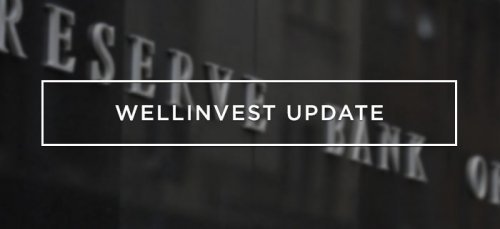
Statement by Philip Lowe, Governor: Monetary Policy Decision
At its meeting today, the Board decided to maintain the current policy settings, including the targets for the cash rate, the yield on 3-year Australian Government bonds, and the parameters for the expanded Term Funding Facility.
The global economy is gradually recovering after a severe contraction due to the pandemic. However, the recovery is uneven and its continuation is dependent on containment of the virus. While infection rates have declined in some countries, they have increased in others. The recovery is most advanced in China, where conditions have improved substantially over recent months. Globally, inflation remains very low and below central bank targets.
Financial conditions remain accommodative around the world and supportive of the economic recovery. Financial market volatility is low and the prices of many assets have risen substantially despite the high level of uncertainty about the economic outlook. Bond yields are at historically low levels, as are interest rates for most businesses and households. The Australian dollar remains just a little below its peak of the past couple of years.
The Australian economy experienced a sharp contraction in the June quarter, with output falling by 7 per cent. As difficult as this was, the decline in output was smaller than in most other countries and smaller than was earlier expected. A recovery is now under way in most of Australia, although the second-wave outbreak in Victoria has resulted in a further contraction in output there. The national recovery is likely to be bumpy and uneven and it will be some time before the level of output returns to its end 2019 level.
Labour market conditions have improved somewhat over the past few months and the unemployment rate is likely to peak at a lower rate than earlier expected. Even so, unemployment and underemployment are likely to remain high for an extended period. Wage and inflation pressures remain very subdued. The Bank will publish a full set of updated forecasts next month.
Over the past six months, the Australian economy has been supported by a substantial easing of fiscal policy. Public sector balance sheets in Australia are in good shape, which allows for continued support, with the Australian Government budget to be announced this evening. Both fiscal and monetary support will be required for some time given the outlook for the economy and the prospect of high unemployment.
The Bank's policy package is working as expected and is underpinning very low borrowing costs and the supply of credit to households and businesses. There is a very high level of liquidity in the Australian financial system and borrowing costs are at record lows. $81 billion of low-cost funding for authorised deposit-taking institutions (ADIs) has been advanced under the initial allowance of the Term Funding Facility. ADIs currently have access to a further $120 billion under this facility. As this is drawn down, there will be a further very significant expansion of the Reserve Bank's balance sheet.
Government bond markets are functioning well, alongside a significant increase in issuance. Bond yields are around record lows. Early in September, the Bank bought a further $2 billion of Australian Government Securities (AGS) in support of its 3-year yield target, bringing total purchases of government securities since March to $63 billion. Over the past couple of weeks, 3-year yields have fallen to around 18 basis points as markets price in some probability of further monetary policy easing.
The Board is committed to do what it can to support jobs, incomes and businesses in Australia. Its actions, including last month's decision to expand the Term Funding Facility, are keeping funding costs low and assisting with the supply of credit. The Board views addressing the high rate of unemployment as an important national priority. It will maintain highly accommodative policy settings as long as is required and will not increase the cash rate target until progress is being made towards full employment and it is confident that inflation will be sustainably within the 2–3 per cent target band. The Board continues to consider how additional monetary easing could support jobs as the economy opens up further.
2020
RBA Media Release, September 2020
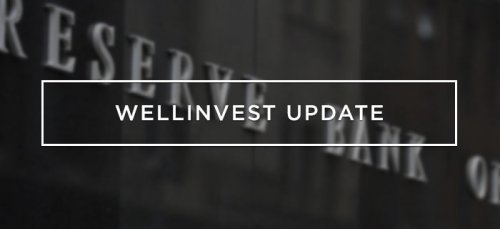
Statement by Philip Lowe, Governor: Monetary Policy Decision
At its meeting today, the Board decided to maintain the targets for the cash rate and the yield on 3-year Australian Government bonds of 25 basis points. It also decided to increase the size of the Term Funding Facility and make the facility available for longer.
Under the expanded Term Funding Facility, authorised deposit-taking institutions (ADIs) will have access to additional funding, equivalent to 2 per cent of their outstanding credit, at a fixed rate of 25 basis points for three years. ADIs will be able to draw on this extra funding up until the end of June 2021. This extension will ensure that all ADIs continue to have access to the Term Funding Facility after the end of September, when the window for drawings under the initial allowance of 3 per cent of outstanding credit closes. Additional allowances associated with an ADI's growth of business credit will now also be available until the end of June 2021. Further details are provided in the accompanying notice.
To date, ADIs have drawn $52 billion under the Term Funding Facility and further drawings are expected over coming weeks. Today's change brings the total amount available under this facility to around $200 billion. This will help keep interest rates low for borrowers and support the provision of credit by providing ADIs greater confidence about continued access to low-cost funding.
The Term Funding Facility and the other elements of the Bank's mid-March package are helping to support the Australian economy. There is a very high level of liquidity in the Australian financial system and borrowing rates are at historical lows. Government bond markets are functioning normally, alongside a significant increase in issuance. Over the past month, the Bank bought a further $10 billion of Australian Government Securities (AGS) in support of its 3-year yield target of 25 basis points. Since March, the Bank has bought a total of $61 billion of government securities. Further purchases will be undertaken as necessary. The yield target will remain in place until progress is being made towards the goals for full employment and inflation.
Globally, an uneven economic recovery is under way after a very severe contraction in the first half of 2020. The future path of that recovery is highly dependent on containment of the virus. High or rising infection rates have seen a recent loss of growth momentum in some economies. By contrast, in China, economic growth has been relatively strong. In financial markets, volatility is low and the prices of many assets have risen substantially despite the high level of uncertainty about the economic outlook. Bond yields remain at historically low levels. The US dollar has depreciated against most currencies over recent months. Given this and higher commodity prices, the Australian dollar has appreciated, to be around its highest level in nearly two years.
In Australia, the economy is going through a very difficult period and is experiencing the biggest contraction since the 1930s. As difficult as this is, the downturn is not as severe as earlier expected and a recovery is now under way in most of Australia. This recovery is, however, likely to be both uneven and bumpy, with the coronavirus outbreak in Victoria having a major effect on the Victorian economy.
Employment increased in June and July, although unemployment and underemployment remain high. The virus outbreak in Victoria and subdued growth in aggregate demand more broadly mean that it is likely to be some months before a meaningful recovery in the labour market is under way. In the Bank's central scenario, the unemployment rate rises to around 10 per cent later in 2020 and then declines gradually to be to still around 7 per cent in two years' time.
Wage and prices pressures remain subdued and this is likely to continue for some time. Inflation is expected to average between 1 and 1½ per cent over the next couple of years.
The economy is being supported by the substantial, coordinated and unprecedented policy easing over the past six months. Fiscal policy is playing an important role. Public sector balance sheets in Australia are in good shape, which allows for continued support. Indeed, fiscal and monetary support will be required for some time given the outlook for the economy and the prospect of high unemployment. In addition, support for the recovery is being provided by Australia's financial institutions, which also have strong balance sheets and access to high levels of liquidity.
The Board is committed to do what it can to support jobs, incomes and businesses in Australia. Its actions, including today's extension of the Term Funding Facility, are keeping funding costs low and assisting with the supply of credit to households and businesses. The Board will maintain highly accommodative settings as long as is required and continues to consider how further monetary measures could support the recovery. It will not increase the cash rate target until progress is being made towards full employment and it is confident that inflation will be sustainably within the 2–3 per cent target band.
2020
RBA Media Release, August 2020
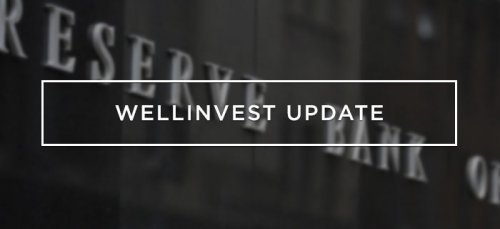
Statement by Philip Lowe, Governor: Monetary Policy Decision
At its meeting today, the Board decided to maintain the current policy settings, including the targets for the cash rate and the yield on 3-year Australian Government bonds of 25 basis points.
The global economy is experiencing a severe contraction as countries seek to contain the coronavirus. Even though the worst of this contraction has now passed, the outlook remains highly uncertain. The recovery is expected to be only gradual and its shape is dependent on containment of the virus. While infection rates have declined in some countries, they are still very high and rising in others. International trade remains weak, although there has been a strong recovery in industrial activity in China over recent months.
Globally, conditions in financial markets remain accommodative. Volatility has declined and there have been large raisings of both debt and equity. The prices of many assets have risen substantially despite the high level of uncertainty about the economic outlook. Bond yields remain at historically low levels.
The Bank's mid-March package of support for the Australian economy is working as expected. There is a very high level of liquidity in the Australian financial system and borrowing rates are at historical lows. Authorised deposit-taking institutions are continuing to draw on the Term Funding Facility, with total drawings to date of around $29 billion. Further use of this facility is expected over coming months.
Government bond markets are functioning normally alongside a significant increase in issuance. The yield on 3-year Australian Government Securities (AGS) has been consistent with the target of around 25 basis points. The yield has, however, been a little higher than 25 basis points over recent weeks. Given this, tomorrow the Bank will purchase AGS in the secondary market to ensure that the yield on 3-year bonds remains consistent with the target. Further purchases will be undertaken as necessary. The yield target will remain in place until progress is being made towards the goals for full employment and inflation.
The Australian economy is going through a very difficult period and is experiencing the biggest contraction since the 1930s. As difficult as this is, the downturn is not as severe as earlier expected and a recovery is now underway in most of Australia. This recovery is, however, likely to be both uneven and bumpy, with the coronavirus outbreak in Victoria having a major effect on the Victorian economy. Given the uncertainties about the overall outlook, the Board considered a range of scenarios at its meeting. In the baseline scenario, output falls by 6 per cent over 2020 and then grows by 5 per cent over the following year. In this scenario, the unemployment rate rises to around 10 per cent later in 2020 due to further job losses in Victoria and more people elsewhere in Australia looking for jobs. Over the following couple of years, the unemployment rate is expected to decline gradually to around 7 per cent.
The Board also considered other scenarios. A stronger recovery is possible if progress is made in containing the virus in the near future. This progress would support an improvement in confidence and a less cautious approach by households and businesses to their spending. On the other hand, if Australia and other countries were to experience further widespread lockdowns, the recovery in both output and the labour market would be delayed. Details on these scenarios will be provided in the Statement on Monetary Policy on 7 August.
In each of the scenarios considered by the Board, inflation remains below 2 per cent over the next couple of years. In the most recent quarter, CPI inflation fell to –0.3 per cent in year-ended terms, reflecting lower oil prices and the effects of various policy measures, including the decisions to make child care and some pre-school free for a period. Inflation is expected to return to positive territory in the current quarter. Beyond that, given the ongoing spare capacity in the economy, inflation is expected to average between 1 and 1½ per cent over the next couple of years.
As Australians deal with the coronavirus, the economy is being supported by the substantial, coordinated and unprecedented easing of fiscal and monetary policy. The Australian Government's recent announcement that various income support measures will be extended is a welcome development and will support aggregate demand. It is likely that fiscal and monetary stimulus will be required for some time given the outlook for the economy and the labour market.
The Board is committed to do what it can to support jobs, incomes and businesses in Australia. Its actions are keeping funding costs low and assisting with the supply of credit to households and businesses. This accommodative approach will be maintained as long as it is required. The Board will not increase the cash rate target until progress is being made towards full employment and it is confident that inflation will be sustainably within the 2–3 per cent target band.
